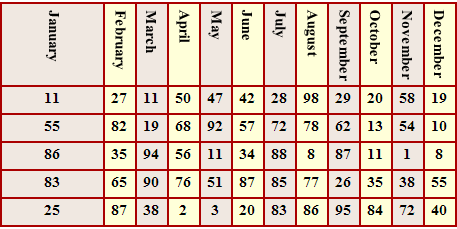Here is a practical example from a StackOverflow question. I hope that it gives a good overview of the basic methods.
Question
What would be the best way to make a function out of the below code ?
It would take a dataList as well as some graphical options (such as colors) as arguments and return a customized tabular representation as
shown below.
overviewtheData=Text@Grid[{Map[Rotate[Text[#],
90Degree]&,data[[1]]]}~Join~data[[2;;]],
Background->{{{{White,Pink}},{1->White}}},
Dividers->{All,{1->True,2->True,0->True}},
ItemSize->{1->5,Automatic},
Alignment->Top,
Frame->True,
FrameStyle->Thickness[2],
ItemStyle->{Automatic,Automatic,{{1,1},
{1,Length@data[[1]]}}->Directive[FontSize->15,Black,Bold]}]

Goals
Since the main function used is Grid it makes sense to allow passing options to it.
You have a series of options that define your table. I want to be able to conveniently change these.
I want the possibility of custom options not understood by Grid.
Implementation
I will use this sample data in all examples below:
data = Prepend[
RandomInteger[99, {5, 12}],
DateString[{1, #}, "MonthName"] & /@ Range@12
];
Goal #1
An argument pattern opts:OptionsPattern[] is added, which matches any sequence of Option -> Setting arguments, and names it opts. (See: OptionsPattern for more.) Then, opts is inserted into the basic function before the other options for Grid. This allows any explicitly given options to override the defaults, or new ones to be given.
customTabular[data_, opts : OptionsPattern[]] :=
Grid[MapAt[Rotate[#, 90 Degree] & /@ # &, data, 1],
opts,
Background -> {{{White, Pink}}},
Dividers -> {All, {2 -> True}},
ItemSize -> {1 -> 5},
Alignment -> {Center, {1 -> Top}},
Frame -> True,
FrameStyle -> Thickness[2],
ItemStyle -> Directive[FontSize -> 15, Black, Bold]
] // Text
Examples:
customTabular[data]

customTabular[data, Background -> LightBlue]

Goal #2
The options that define your tabular format can be separated from the function body. This will allow them to be conveniently changed or referenced. I start by clearing the previous definition with ClearAll. Then I set default Options for customTabular:
ClearAll[customTabular]
Options[customTabular] =
{Background -> {{{White, Pink}}},
Dividers -> {All, {2 -> True}},
ItemSize -> {1 -> 5},
Alignment -> {Center, {1 -> Top}},
Frame -> True,
FrameStyle -> Thickness[2],
ItemStyle -> Directive[FontSize -> 15, Black, Bold]};
Now the function proper. Here Options@customTabular gets the rules given above.
The opts pattern is changed to OptionsPattern[{customTabular, Grid}] to declare options for either function as valid options (that is all options in either Options[customTabular] or Options[Grid]).
customTabular[data_, opts : OptionsPattern[{customTabular, Grid}]] :=
Grid[MapAt[Rotate[#, 90 Degree] & /@ # &, data, 1],
opts,
Sequence @@ Options@customTabular
] // Text
Now you can easily change the defaults with SetOptions. Example:
SetOptions[customTabular,
Background -> {{{LightMagenta, LightOrange}}}
];
customTabular[data]

Goal #3
Now I want to add an option that is not passed to Grid. I choose "Rotation" to change the text rotation of the title row.
Again I clear the prior definition and the default options. Notice the inclusion of "Rotation" -> 90 Degree in the list.
ClearAll[customTabular]
Options[customTabular] =
{Background -> {{{White, Pink}}},
Dividers -> {All, {2 -> True}},
ItemSize -> {1 -> 5},
Alignment -> {Center, {1 -> Top}},
Frame -> True,
FrameStyle -> Thickness[2],
ItemStyle -> Directive[FontSize -> 15, Black, Bold],
"Rotation" -> 90 Degree};
Now I need a way to use this new option, and I need a way to keep this option from being sent to Grid:
I first join any explicit options to the front of the Options@customTabular list, again to override defaults.
customTabular[data_, opts : OptionsPattern[{customTabular, Grid}]] :=
Grid[MapAt[Rotate[#, OptionValue["Rotation"]] & /@ # &, data, 1],
Sequence @@ FilterRules[{opts} ~Join~ Options@customTabular, Options@Grid]
] // Text
Example:
SetOptions[customTabular, Background -> {{{LightBrown, LightYellow}}}];
customTabular[data,
Dividers -> All,
"Rotation" -> -90 Degree,
FrameStyle -> {Darker@Red, Thick}
]

Addendum
To add syntax highlighting to a function like this there exists a presently undocumented form; see:







